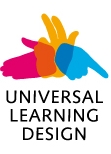Paper details
Organising Student Support Using Accessible Electronic Documents, E-books and Audiobooks: an Overview
PhD Jan Engelen

|
Abstract |

|
Full paper |

|
Video recording |

|
Presentation |

|
Additional materials |
Abstract |
Overview
In this presentation, I will discuss several technological and pedagogical items related to university level teaching for students with a functional limitation (or an impairment). It is well known that many universities pay a lot of attention to making their education as accessible as possible, also to students that need special support or extra help.
In a first part, I will discuss the different types of limitations that students might have as well as some existing technical solutions adapted to their specific limitation. In the next part, I will give a critical overview of the possible support techniques, based on my experience in international project work and local actions.
Finally I will talk about what I learned from my contacts with the many other universities that invest in real support for the group of students we have in mind.
A small list of good advices will be added at the end of the full text version.
Overview of major functional limitations and how to cope with them as a
university level student
Deafness and hard of hearing
As most of the course materials are still in a printed form, they are accessible for this group of students. However one must be aware that for many of them, sign language is their mother tongue and the written language (that is not just a pure transcription of the signs) is often their second language. This group evidently has serious problems in following oral courses. Although several systems for automatic speech recognition (IBM’s Liberated Learning Consortium is the best known example) have been tried out, results are still mediocre for most languages except for English.
Depending on the level of state and university funding, these students can call in the help of sign language interpreters. Automatic sign language generation is still far from a reality although quite a lot of research is going into this problem’s solution.
The situation is a bit easier for students that are hard of hearing. Quite often, it suffices to connect a lecture room’s public address audio system to a special receiver.
Low vision
Students with some rest vision can use enlargement systems (optical or computerized) to have access to course texts. Here the problem is often related to viewing the explanations written on the white- or blackboard. Special cameras and software do exist: a computer screen is split in two: the blackboard can be seen in the upper half of the screen, the course material in the lower part.
Big improvements are made through the use of computerized teaching boards (although not yet widely used in university level education). Their screen information can easily be transmitted to a visually impaired student’s portable computer, can be enlarged and can be recorded. Especially video to usb devices from EPIPHAN are quite popular in this respect.
Blind students
Students without any rest vision need to turn their written materials into another modality: audio (talking computer) or Braille (on paper or on temporary Braille reading devices).
Main challenges here are:
Students with dyslexia
Dyslexia is a neural complication in the brain that results in an increased difficulty for understanding written material. Therefore very often students choose to turn written texts into audio. This can be done with special software packages, usually capable to read and handle pdf documents.
Role of e-books and audiobooks
E-books and audiobooks are a relatively new phenomenon with a very slow start in take-up for many years now. In our experience very little use of this material is made in university level education. The large attention paid nowadays to iPad (or other table) use in education might change this but e-books with course material are still very rare. This might change when the e-book standard EPUB3 becomes widely spread (heavily promoted by the International Digital Publishing Forum). This standard has the extra benefit that EPUB3 books can easily be turned into audiobooks usable for blind persons.
Student support organisation
My own university, KU Leuven started accepting students with a motor handicap since the early eighties. In that period a small group of volunteer fellow-students was recruited per person with impairment and they provided all daily support.
But over the last decades, especially the last one, accessibility became a much wider concept. As all teaching and organizing at the university is now done through computer access, eAccessibility became a prime factor in the teaching process for the group of reading impaired students (low vision, blind, severe motor handicap, dyslexia). The same is evidently true at other universities.
I will report briefly about our own experiences and point to a couple of special solutions implemented at other universities.
|
Full paper |
The Full Paper is available in the format DOCX. You can download the file of 0.9 MB here. |
Video recording |
|
Presentation |
A PPT of presentation is available. Please download the 2.2 MB large file here. |
Additional materials |
– |









